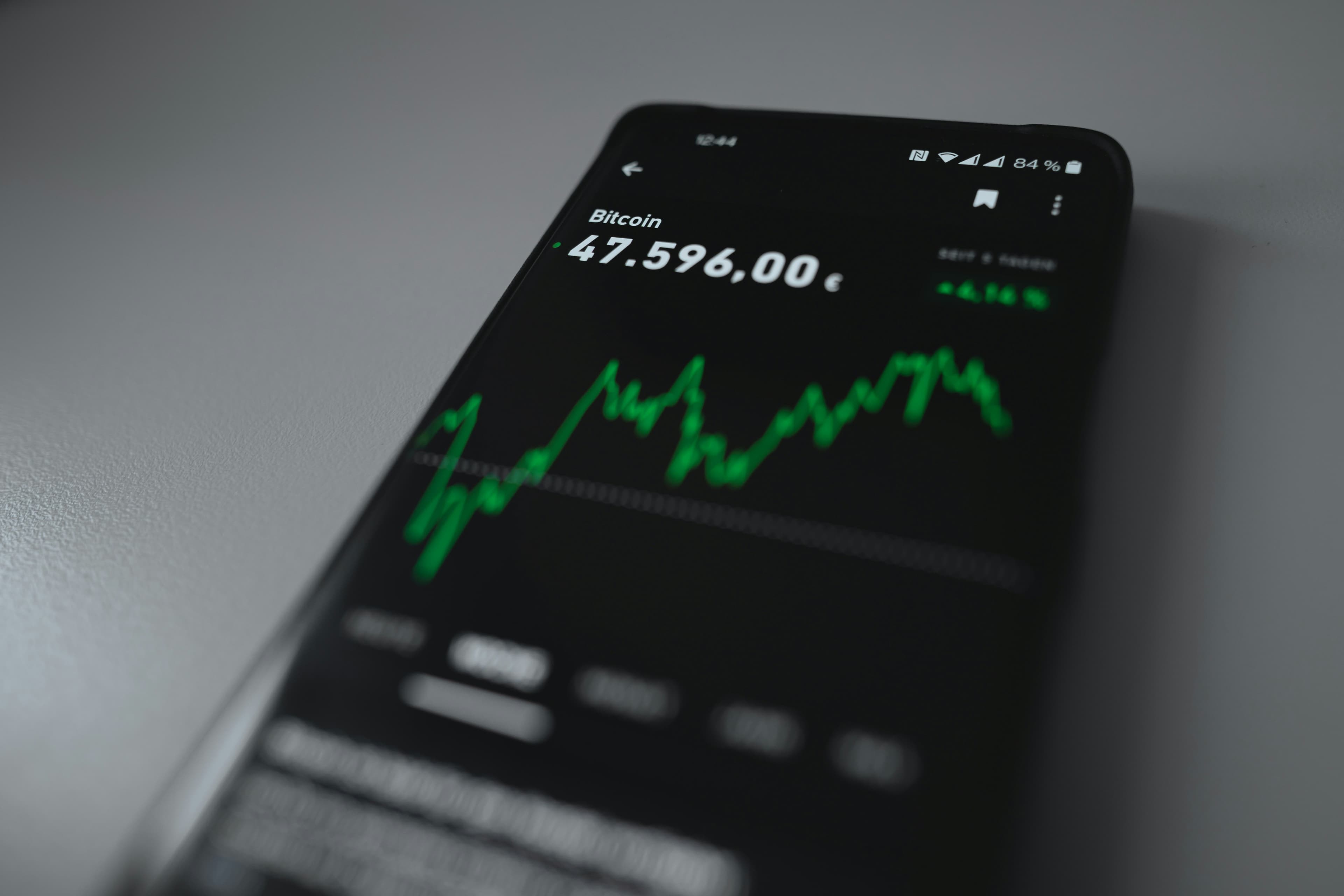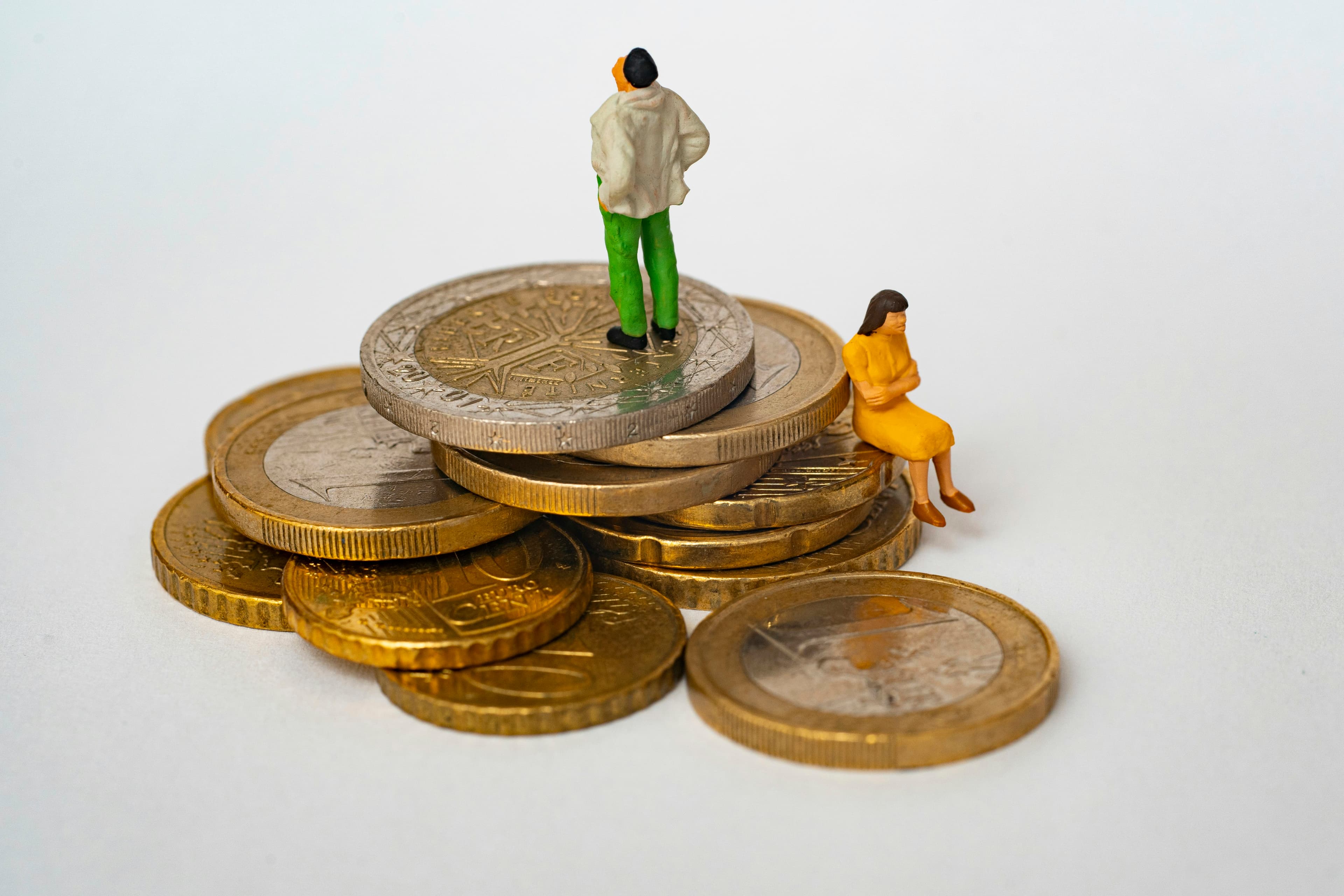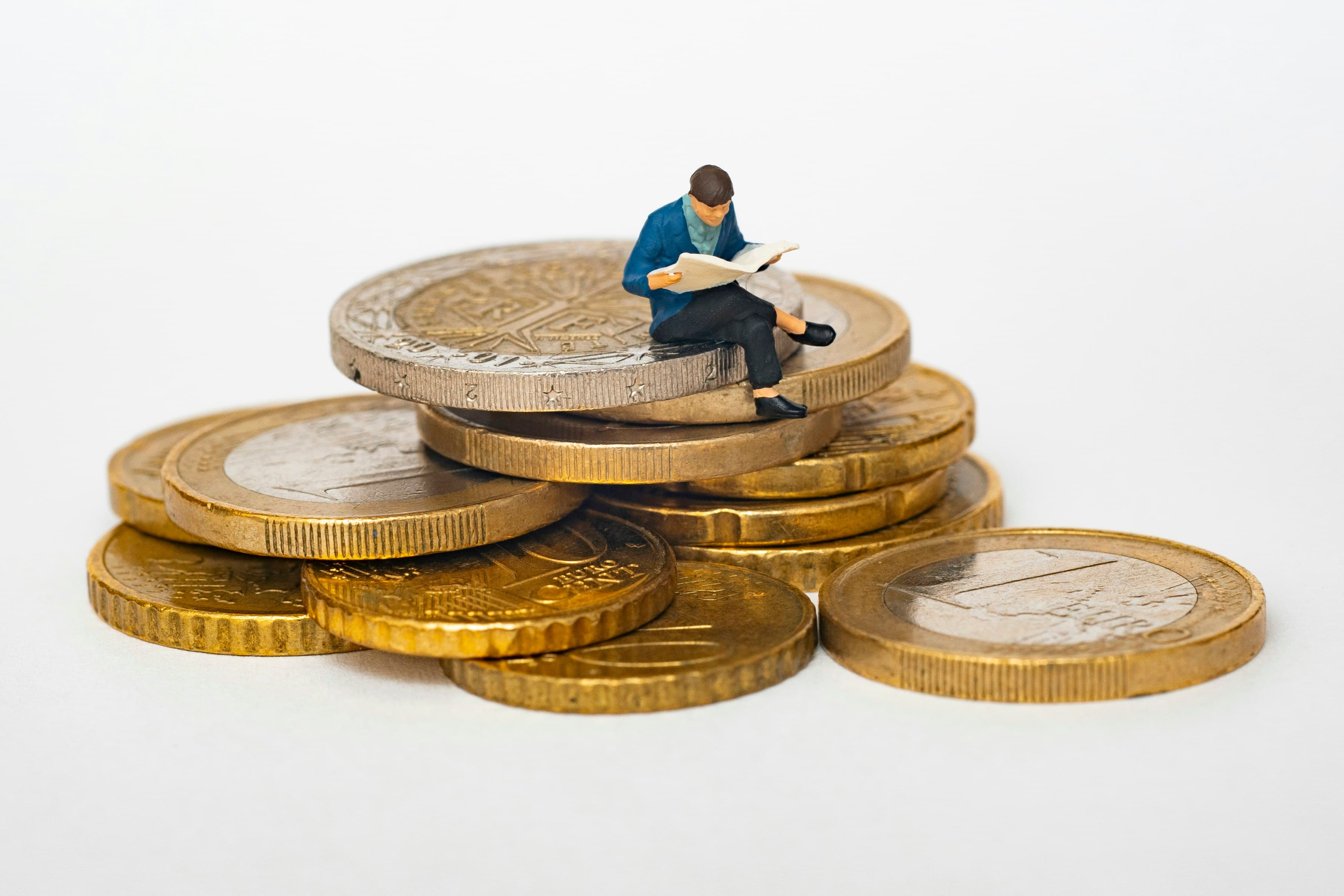Finding a Company's True Competitive Edge

If you're interested in , you eventually realize that a company's long-term performance is driven by its quality. To succeed, you have to get good at spotting what makes one business truly superior to another. This skill really comes down to one thing: identifying a company's competitive advantage.
Capitalism is an incredibly tough arena. It pits market players against each other in a relentless drive to maximize profits. To win over customers, companies are constantly lowering prices, launching new products, building brands, and innovating in countless other ways to get ahead of their rivals. From the outside, it can sometimes look like a rigged game where the wrong people get rich. The reality is much more than Easy Street.
Think of most companies as an overly aggressive basketball team that isn't afraid to throw elbows, trip opponents, and would probably gouge someone's eyes out if the referee weren't watching. That’s one of the main functions of government in business—to be the ref. Without rules and oversight, the pursuit of profit could lead businesses to destroy each other, and maybe the planet along with them.
Because the competition is so fierce, companies with a competitive advantage are incredibly rare. Most are just average, with nothing special to set them apart. They grow at the same pace as their market, while below-average companies slowly wither and die. Only the businesses with a real edge can consistently generate growing profits for their shareholders over the long haul. While no one has an exact count, I'd estimate that less than 10% of all companies have a genuine, lasting advantage. Their scarcity is precisely what makes them so valuable and worth searching for.
Looking for the Edge
When I’m looking for a superior business, I’ve trained myself to look for a specific trifecta: a company with a low market share of a large and growing market, supported by a clearly identifiable edge that will let it grow for years.
The first two parts are surprisingly easy to figure out. Companies often post this information right on their investor relations websites. Take Intuit, for example. On their site, you’ll see that its small-business accounting software, QuickBooks, has 5 million online subscribers. They also state that the total addressable market is 800 million customers worldwide. A quick calculation (5 million divided by 800 million) shows a market share of less than 1%. That definitely gets my attention.
Even when companies don't hand you the numbers, they’re often easy to find. For Amazon, we know its North American sales in 2020 were $236 billion. A quick Google search for "U.S. retail sales 2020" brings up a National Retail Federation report of $4.1 trillion. Add in Canada's $600 billion, and you get a total North American retail market of $4.7 trillion. Amazon’s $236 billion divided by that total gives it a 5% market share.
This part is straightforward. The hard part is figuring out the business quality. Does it have a sustainable competitive advantage? What is its moat, and can that moat hold up against competitors trying to cross it? This is where judgment comes in, and you can't find that with a Google search. For anyone interested in , the good news is that this kind of judgment is often just common sense, organized within a helpful framework. We can classify competitive advantages just like a bird watcher classifies birds—and thankfully, there are far fewer types of advantages than there are species of birds.
What an Advantage Is Not
Let's start with what a competitive advantage isn't. Warren Buffett once pointed out that rapid growth does not equal an edge. Confusing the two is a classic mistake, and it's a major reason why strategies focused purely on growth or momentum often underperform. Focusing too much on short-term growth can be a disaster.
I once had a client who was adamant about buying stock in Vonage, a company that pioneered routing phone calls over the internet and went public in 2006. After studying the market, I saw that nothing was stopping other companies from copying them. The company had no moat. Its tech wasn't faster, its costs weren't lower, and customers didn't care about the brand making their internet calls happen. I talked the client out of it, which turned out to be the right call. After an initial surge, Vonage's revenue and profits collapsed as competitors flooded the market and drove prices down. The stock went public at $17 per share; three years later, it had lost over 95% of its value. Fifteen years later, in 2021, Vonage was sold for a price that was only 25% higher than its IPO price—an annualized return of just 1.5%.
GoPro is an even clearer example of mistaking a hot product for a durable business. The handheld action camera company went public in 2014 with a $3 billion valuation. Investors loved the idea of people filming themselves, and the valuation doubled. But competitors loved the idea too. The market became brutally competitive, and GoPro lost 85% of its peak valuation and never bounced back. With little to differentiate it, it likely never will.
These stories underscore Buffett’s warning: "Never confuse a growth industry with a profitable one." This is especially true for tech hardware, which is much easier to copy than software. But it applies everywhere. Look at the airline industry. Companies like Delta and United have benefited from the same rise in global air travel as other travel-related businesses, yet over their hundred-year history, they’ve lost more money than they've made. Why? They never gained a real edge over each other. No airline has a powerful brand or a sustainable cost advantage. They are stuck in mediocrity, competing away almost all their potential profits to customers in the form of lower prices.
Moat 1.0: The Low-Cost Producer
While big names like Delta, American, and United have all gone bankrupt at least once, an obscure company in the same industry called HEICO has seen its stock price grow five-hundred-fold. How? By mastering one of the oldest moats in business: being the low-cost producer.
In commodity markets—think corn, sugar, or steel—being the cheapest is the only advantage that matters. People don't care about the brand of steel they're buying; they care about the price. The company that can produce it for less will win. This is an immutable law. The term "commodity" here also applies to anything differentiated mainly by price. People don't shop at Walmart for the lovely ambiance; they go because Walmart uses its massive scale to buy everything from beer to broccoli more cheaply and passes the savings on.
In the Digital Age, this advantage is more important than ever. Back in the 1980s, you had to physically drive to a Walmart to see its lower prices. Today, e-commerce lets you comparison shop from your couch. Instacart lets you pit Kroger against Publix. Google Flights gives you instant intelligence on the best airfare. The internet brought radical price transparency, and the smartphone perfected it. Now you can stand in a Best Buy and check on your phone to see if another store can beat its price.
Most tech companies powered by software don’t get their edge from being the low-cost producer. Their moats come from other sources, which we'll get to next.
Moat 2.0: Brands
The Industrial Age brought mass production, but it took away the personal connection people had with the things they used. When most people lived on farms, they made their own clothes and food. As they moved to factories, they started buying these things from stores. Without firsthand knowledge of where their goods came from, they began to rely on brands with reputations for quality.
Soap was one of the first mass-branded products. In the early 1800s, Procter & Gamble and Colgate started as soap companies. But an even earlier company, Pears, shows how a brand can build a moat that lasts for generations. Andrew Pears, a barber's apprentice in London in the late 1780s, noticed that the makeup his wealthy clients used was often meant to hide skin damage from harsh soaps containing arsenic or lead. He saw an opportunity and created a gentle, translucent soap scented with rosemary and thyme.
Pears soap became a hit with the wealthy, but the real breakthrough came when Thomas Barratt took over marketing in the latter half of the 1800s. Barratt is now considered the father of modern advertising. He understood the power of brand trust and systematically exploited it. He used taglines like, "Good morning. Have you used Pears' soap?" and even hired famous actresses to endorse the product. He knew it would be foolish to sell Pears as a simple commodity. By building customer loyalty, the company could charge a huge premium over the cost of its simple ingredients. Accountants later called this intangible connection "goodwill."
Today, powerful brands extend to nonessentials. Is a Hermès scarf worth $25,000? It is if the company’s marketing team has done its job. As Hermès CEO Axel Dumas said, "Our business is about creating desire." Coca-Cola sells sugar water, but it has convinced generations that Coke is "the real thing." This is why Warren Buffett bought the stock in 1988 and still holds it.
However, most brands don't last like Coke or Tiffany. Brands are fickle. The story of Pears also shows how a brand can disintegrate. After Barratt’s death, the company was bought by a conglomerate and gradually lost its connection with consumers in the UK and US. The list of dead brands is long. Before you invest in a company whose main edge is its brand, be sure it has staying power. This is especially true today, as new channels like TikTok and YouTube allow new companies to challenge legacy brands with incredible speed.
The biggest brands today arguably belong to big tech. listed the world's five most trusted brands as Google, PayPal, Microsoft, YouTube, and Amazon. A tech company's brand power is often stronger because it’s built on utility, not just emotion. As Amazon CEO Jeff Bezos wrote, "brand image follows reality and not the other way around." As long as the software delivers value, the brand remains strong.
Platforms and Switching Costs
When a becomes the go-to application for search, e-commerce, or social media, it can become a "platform." This is a huge competitive advantage. It's like having an aircraft carrier from which you can launch new, profitable attacks. Apple is a classic example. The iPhone is a relatively low-margin hardware device, but the apps sold on it cost Apple nothing to make. Developers build the apps, and Apple takes a 30% cut for giving them access to over a billion users. When thinking about , transforming a product into a platform is a powerful goal.
Platforms create another advantage: high switching costs. The deeper a company gets its hooks into you, the harder it is to leave. Many of us have so many documents archived in Microsoft Word and Excel that switching to a new program would be a nightmare. This "sticky" relationship is a powerful moat. Customers hate to change once they're comfortable. Even when the actual cost to switch is low, the switching cost can be huge. It’s not hard to switch from Google to Bing, but people are used to Google, and it works. Why bother? This is a key insight for anyone trying to understand that can achieve massive scale.
First Movers and Fast Movers
The term "first-mover advantage" comes from chess; the player with the white pieces moves first and takes the initiative. In a new market, the company that stakes the first claim often gets the best territory. During the Great Depression, 3M invented Scotch Tape. Innovation was so slow back then that no competitor tried to copy it for over thirty years.
In today's fast-paced economy, that would be unimaginable. A company that doesn't constantly innovate won't last thirty months, let alone thirty years. That's why Mark Zuckerberg’s motto was "move fast and break things." In an era of rapid change, being a mover is more important than being the first. Sears wasn't the first to invent the mail-order catalog or the department store, but it was the quickest and most aggressive in scaling both, which led to a century of success. But this advantage alone is never enough. A can get an early lead, but to build one of the truly , it must establish secondary advantages, like a low-cost position or a trusted brand. Elon Musk may dismiss moats as "lame," but he has used Tesla's early lead to build both customer loyalty and a low-cost position from its massive production scale.
Network Effects: The Ultimate Moat
The final source of competitive advantage is, in many ways, the most powerful: network effects. A great example is Venmo. It built technology that let people easily pay each other from their phones. Once it developed a core group of loyal users, that group began to exert a gravitational pull. The more people who joined, the more value it had for everyone else, which encouraged even more people to join. I downloaded the app because enough of my friends said, "Just Venmo me."
This is also called the "flywheel effect." A heavy flywheel is hard to get spinning, but once it's going, its momentum makes it equally hard to stop. Each turn builds on the last. Airbnb is another example. More apartments listed on the site attracted more renters, which in turn incentivized more people to list their homes, and the flywheel started spinning faster.
This dynamic is why many tech markets are "winner take all" or "winner take most." People are on Facebook because other people are on Facebook. Who needs a second social network? The value of a network grows exponentially as its user base grows, a concept known as Metcalfe’s Law. Two fax machines are four times as valuable as one; four fax machines are sixteen times as valuable.
What makes today's digital networks so unique is their global reach and the fact that they were built on infrastructure paid for by someone else. Software companies didn't have to dig canals or lay cables; hardware and telecom companies did that. This allowed software platforms to attain global reach with very little capital investment. No wonder these companies have gotten so big, so fast. For anyone exploring , understanding these powerful, modern moats is more critical than ever.






